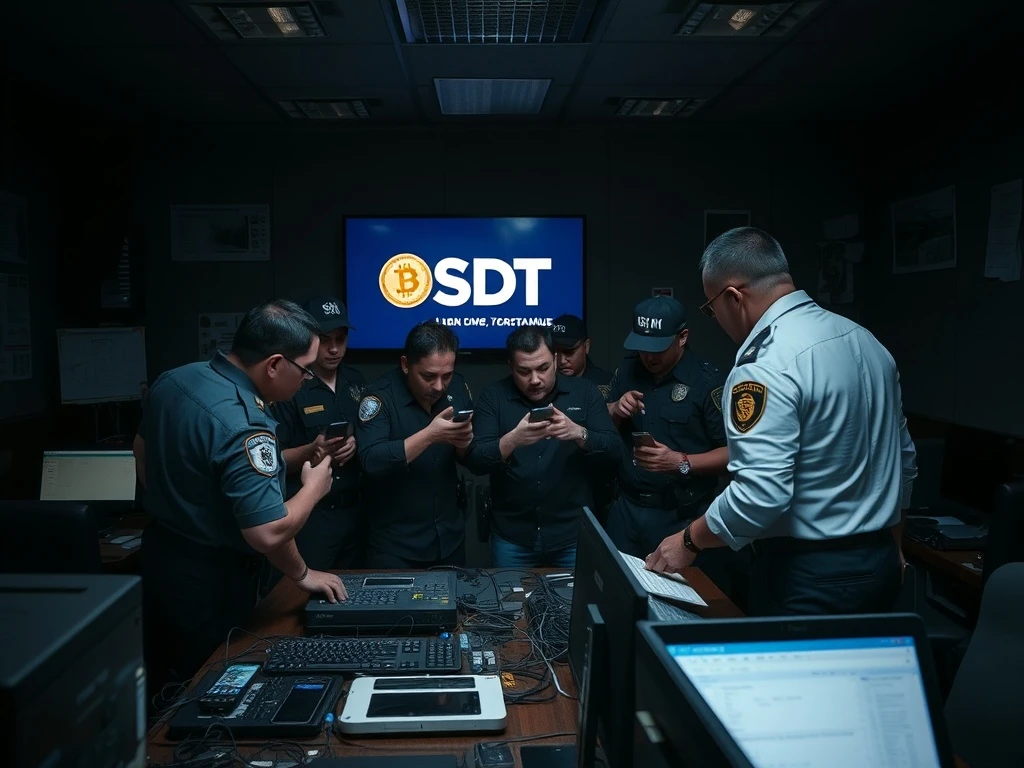Shocking USDT Crypto Scam Exposed: Hunan Authorities Arrest 3 for Social Media Fraud via Trojan Horse

In a shocking turn of events, Hunan authorities have dismantled a sophisticated USDT crypto scam, arresting three individuals for orchestrating social media fraud via a trojan horse. This case highlights the growing risks of cryptocurrency transactions on unverified platforms.
How the USDT Crypto Scam Operated
The suspects—Tang, Zhang, and Xu—used over 30 mobile phones, 10 computers, and 30 overseas SIM cards to create fake personas on platforms like Tinder, Telegram, WhatsApp, and Twitter. Here’s how the scam unfolded:
- Fabricated identities posing as affluent women or crypto investors
- Targeted males over 26 years old with scripted interactions
- Lured victims into investing in USDT with false promises
- Deployed a trojan horse via malicious links to steal funds
The Role of Social Media Fraud in Crypto Scams
The suspects exploited emotional manipulation and technical vulnerabilities. They promised “better mining mechanisms” and “airdrop rewards” to trick victims into clicking malicious links. Once accessed, the trojan horse siphoned USDT from victims’ wallets without their knowledge.
Why This Cryptocurrency Fraud Case Matters
This case underscores the dangers of unverified crypto transactions. Key takeaways:
| Risk | Lesson |
|---|---|
| Emotional manipulation | Be wary of too-good-to-be-true offers |
| Technical exploitation | Avoid clicking unverified links |
| Cross-border operations | Scams often leverage international platforms |
Frequently Asked Questions (FAQs)
Q: How did the suspects access victims’ wallets?
A: They used a trojan horse deployed via malicious links to gain unauthorized access.
Q: What platforms were used in this scam?
A: The suspects operated on Tinder, Telegram, WhatsApp, and Twitter.
Q: How can I protect myself from similar cryptocurrency fraud?
A: Verify all investment opportunities, avoid clicking suspicious links, and use secure wallets.
Q: Were the suspects part of a larger network?
A: Authorities haven’t confirmed this, but the use of international platforms suggests possible cross-border collaboration.









